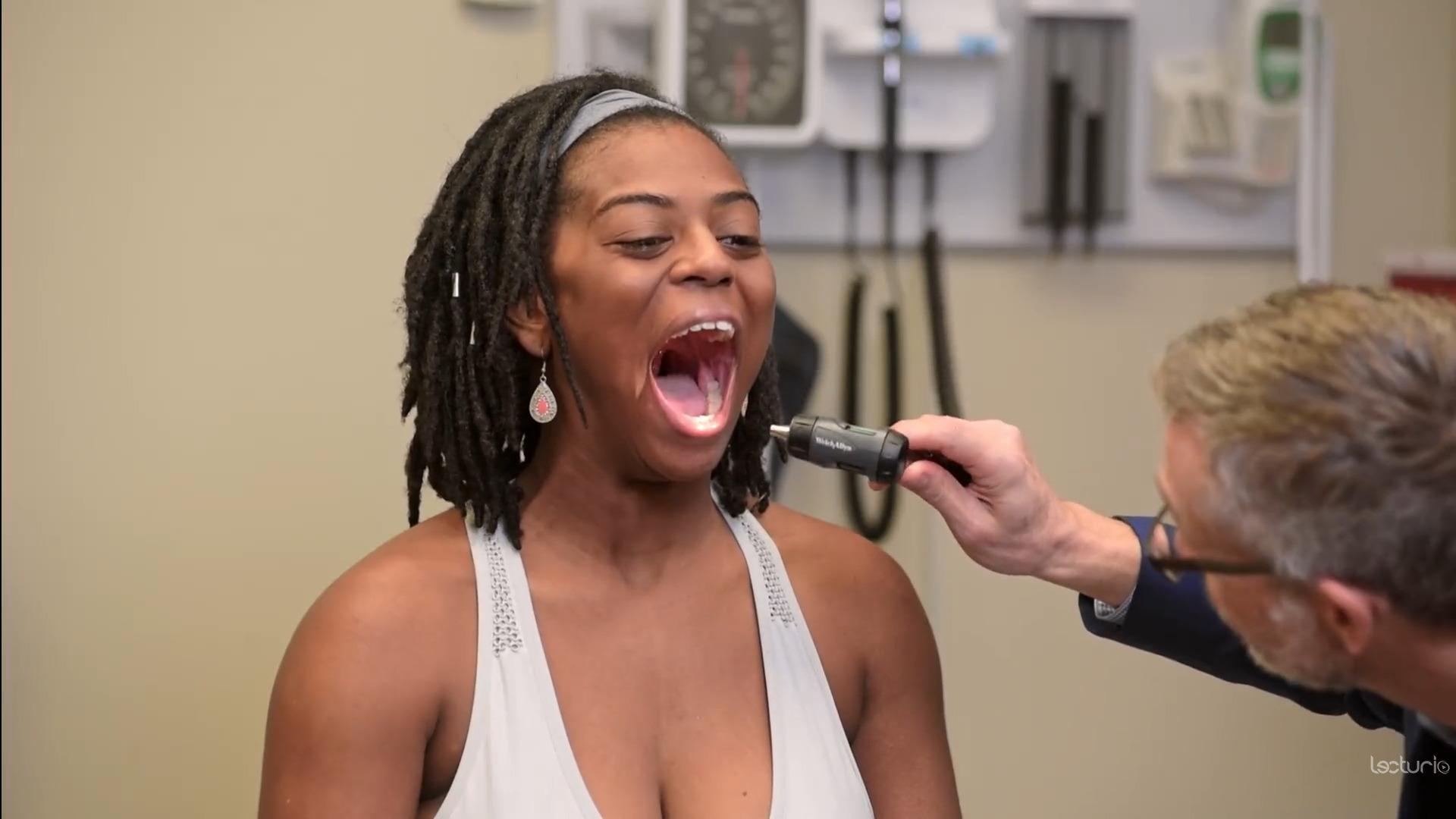Playlist
Show Playlist
Hide Playlist
Patient Introduction and Review of the Etiology of Rash
-
Slides Physical Exam Skin Exam Introduction.pdf
-
Reference List Physical Examination.pdf
-
Download Lecture Overview
00:00 Alright, so let's talk about a dermatologic case. This is a 40-year-old man who is presenting to his physician for an itchy, scaly rash that has been present for about a month. It's most prominent on his knees and his elbows. Now, when thinking about a rash, I want us to really focus on 4 particular variables that will help to guide us as we move into the physical exam. 00:23 What's the time course of the process? What's the distribution in terms of where it's located? What's the level of inflammation that we're seeing in the lesions? And are there any other systemic manifestations or systemic symptoms that are co-occurring with the rash? Let's look at a few examples of some rashes that may highlight some of these variables. So, a patient with psoriasis typically has a chronic indolent course. The lesions are symmetric and they are localized to the extensor surfaces. Patients typically don't have any inflammation or very little inflammation at the actual sites of the lesions and rarely would you find systemic manifestations. The exception would be patients with psoriatic arthritis who may have some joint pain. In contrast, the patient with atopic dermatitis, well yes in terms of the timing it is also a chronic condition. The location, however, rather than being on the extensor surfaces is more likely to be on the flexor surfaces, that way it would also be symmetric. 01:21 There is going to be a lot of inflammation. This is a very itchy, erythematous condition. You'll have excoriations as evidenced of lots of scratching. But again very little systemic symptoms, if any. Thinking about infections which is another way to think about the different variables it play, patients with acute infectious etiologies like cellulitis, they are definitely going to have systemic symptoms or at least they oftentimes do. Impetigo, very specifically located usually around the mouth or certainly in the upper part of the head and the neck with these classic honey-crusted lesions, but you could also have chronic infections like tinea pedis with that classic moccasin-like distribution that you can see with erythema and scale around the soles of the feet. And then we have rheumatologic rashes, like for example from polyarteritis nodosa, a small to medium vessel vasculitis. Now, regardless of the timing, the real thing to focus on here is the presence of systemic manifestations. These folks, by virtue of the fact that this is a systemic type of vasculitis, will have fevers, weight loss potentially, joint pain, hematuria as evidence of kidney involvement and also neuropathy. So you'd expect to put all these different factors in mind as you're trying to come up with the right differential diagnosis for a particular rash. Another particularly aggressive type of disease process is pemphigus vulgaris. This is going to be acute to subacute. You're going to have widely distributed lesions with importantly mucosal involvement and being sure to check out the mucosal surfaces is such an important part of the exam that we are going to focus on. And then in this case, unlike psoriasis for example, you're going to have highly inflammatory blisters, most often ruptured blisters due to the fact that this disease process is happening between the tight junctions within the epidermis rather than at the epidermis-dermis junction. So returning to our patient, there is a lot of potential possibilities for what's going on in this patient just based on the limited description we have so far. Maybe it's psoriasis, atopic dermatitis, lichen planus, contact dermatitis, and allergic or irritant type of dermatitis. We're really going to have to do a good physical exam to find the terminology we use to describe rashes and put all these together to come up with a good assessment and plan.
About the Lecture
The lecture Patient Introduction and Review of the Etiology of Rash by Stephen Holt, MD, MS is from the course Examination of the Skin.
Included Quiz Questions
Which of the following statements is TRUE regarding rashes?
- Cellulitis and impetigo are acute skin infections.
- Psoriasis is more of an acute than a chronic skin condition.
- Atopic dermatitis is characterized by acute vesicles on the skin.
- Psoriasis is characterized by inflammatory erythema.
- Atopic dermatitis has an asymmetric random distribution on the body.
Which systemic symptoms are important to ask about when taking the history of a patient with a rash?
- Fever and joint pain
- Depression
- Urinary frequency
- Difficulty swallowing
- Memory loss
Customer reviews
5,0 of 5 stars
| 5 Stars |
|
5 |
| 4 Stars |
|
0 |
| 3 Stars |
|
0 |
| 2 Stars |
|
0 |
| 1 Star |
|
0 |





